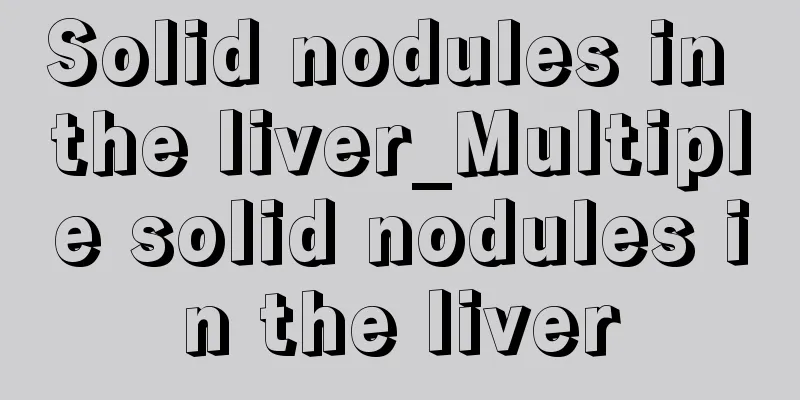What are the symptoms of damp-heat in the triple burner?

|
There are so many key parts of the body that it is almost impossible for people to recognize all of them. As a result, most people are unable to recognize the true nature of physical diseases in a timely manner, which can easily lead to major twists and turns in the treatment of the disease. For example, triple-burner damp-heat is a very rare physical condition that has a great impact on health. Let’s take a look at the symptoms of triple-burner damp-heat. The three burners are divided into: upper burner, middle burner, and lower burner. The area above the diaphragm is the upper burner, which includes the heart and lungs; the middle burner includes the spleen and stomach; and the area below the navel is the lower burner, which includes the liver, kidneys, large and small intestines, and bladder. Taking the upper, middle and lower burners as the framework, the pathological changes, symptom characteristics and transmission patterns of febrile diseases are analyzed and summarized, and the treatment principles are established to predict the prognosis and outcome. It was founded by Wu Jutong in the Qing Dynasty. Focus on the differentiation of damp-heat syndrome. Warmth in the upper part of the body That is, the symptoms of warm evil invading the upper part of the body and reaching the lungs and pericardium. When warm evil attacks the lungs, the Wei Qi is blocked externally and the Lung Qi is not released internally. The clinical manifestations are fever, slight aversion to wind and cold, headache, thirst, cough, thin white tongue coating, and floating and rapid pulse. This symptom is often seen in the early stages of febrile disease and is a superficial symptom. If the external pathogens enter the interior, the evil heat blocks the lungs and the lung qi is blocked, it will manifest as fever, sweating, thirst, cough, wheezing, yellow tongue coating, and rapid pulse. If the evil in the lung meridian is not resolved and the evil heat is trapped inside, resulting in the obstruction of the heart orifices, it will be transmitted to the pericardium in reverse, with symptoms such as red tongue, coma and delirium, or confusion and inability to speak, tongue stiffness and limb numbness. Although this symptom belongs to the upper part of the body and is seen in the early stages of febrile disease, the condition is serious. Damp-heat in the upper part of the body That is, damp-heat invades the upper part of the body, and the disease is located in the lungs and skin. It is the early stage of damp-heat disease. Symptoms include severe aversion to cold, mild fever, or fever in the afternoon, heavy head, tired limbs, chest tightness without sweat, sticky mouth without thirst, greasy white tongue coating, and weak pulse. Since dampness is closely related to the spleen and stomach, damp-heat in the upper part of the body is often accompanied by symptoms such as chest tightness, loss of appetite, intestinal rumbling, and loose stools due to dampness blocking the spleen and stomach. If dampness and heat accumulate and turn into phlegm and obscure the pericardium, the patient will be characterized by a dull expression, dull consciousness, and alternating coma and wakefulness. Warmth in the middle jiao That is, the warm evil is transmitted to the middle burner, and the disease affects the yangming meridians of the hands and feet. Yangming is responsible for dryness. When pathogenic factors enter Yangming, they often turn into dryness and cause symptoms of internal heat and dryness. If the evil heat is in the stomach, it is mostly invisible heat. Due to the excessive heat in the stomach meridian, the fumigation is directed to the outside, causing fever, no aversion to cold but aversion to heat, red face, sweating, thirst, rough breathing, dry yellow tongue coating, and a floating and rapid pulse. If the pathogen enters the large intestine, it is mostly due to tangible heat accumulation and obstruction of intestinal qi. Symptoms include severe heat in the afternoon, constipation, difficulty urinating, heavy and muddy voice, yellow and black dry tongue coating, and deep and strong pulse. |
<<: How to lose weight by exercising in half a month?
>>: What is the reason why vests sweat so much
Recommend
What are the symptoms of bone cancer?
Bone cancer, a malignant tumor of bone tissue, ha...
Nutritional therapy for lung cancer
Although modern technology is advanced, the sympt...
What to eat to prevent prostate cancer
Most of the nutrients in the body need to be prov...
Effects and functions of opal
The appearance of some stones is not only very be...
How long can a person live with gastric cancer metastasized to the pancreas?
The survival time of gastric cancer metastasis to...
How long does it take to take a bath during confinement?
Right after giving birth, the new mother's bo...
Bed culture in countries around the world
Whether you are conservative in sex life, bold an...
What are the dangers of late-stage skin cancer
The importance of skin to us is self-evident. Man...
How to treat esophageal cancer in an 80-year-old man
The treatment of esophageal cancer in the octogen...
How to remove scale from a kettle
Many people have always encountered the same diff...
What are the symptoms of advanced colorectal cancer
In the late stage of colorectal cancer, the lesio...
How long does it take to stop bleeding after tooth extraction
The process of tooth extraction is very painful, ...
What are the hazards of long-term sitting to the prostate?
For male friends, it is important to avoid sittin...
Swollen submandibular lymph nodes are caused by these diseases
According to experts, there are many causes of sw...
What are the benefits of using a hot towel on your face? It turns out there are these 8 benefits
Many people like to use hot towels to apply to th...









